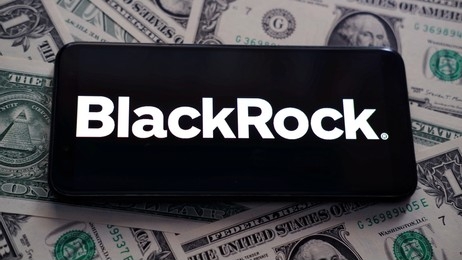Hot Projects
SOL Price Soars As First-Ever Solana ETF Filing Surfaces In The US | MATIC News


The cryptocurrency market has taken another step towards regulated and mass investment in cryptocurrencies with the first-ever application for a Solana ETF in the US by asset manager and Bitcoin ETF issuer VanEck.
Following the approval of spot Bitcoin ETFs in January and the anticipated launch of Ethereum ETFs in July, this development marks another milestone in expanding cryptocurrency investment options for retail and institutional investors.
The news of VanEck’s Solana ETF filing with the US Securities and Exchange Commission (SEC) caused a surge in the native token SOL, with its price rising nearly 8% upon disclosure by Matthew Sigel, VanEck’s head of digital asset research.
VanEck’s Confidence In Its Solana ETF Filing
In a social media post, Sigel highlighted VanEck’s reasons behind the filing, emphasizing Solana’s potential as a competitor to Ethereum and its ability to support various applications such as payments, trading, gaming, and social interactions.
Describing Solana as open-source blockchain software designed for scalability, speed, and low costs, Sigel explained that the platform offers an enhanced user experience across multiple use cases.
Related Reading
Sigel also cited Solana’s ability to process thousands of transactions per second at low fees and use a secure mechanism based on proof-of-history and proof-of-stake as reasons for the bold move to file the Solana ETF with the SEC on Thursday.
VanEck believes that Solana’s high throughput, low fees, strong security, and vibrant community make it an attractive option for an ETF, providing investors with exposure to an innovative open-source ecosystem.
In addition, Sigel believes that the native token SOL serves as a means of payment for transaction fees and computing services on the Solana blockchain, similar to Bitcoin and Ethereum in their respective networks, suggesting that it should be classified as a commodity rather than a crypto security, thus having a strong argument for SEC approval of the Solana ETF.
Analysts Anticipate Bullish Sentiment
While the news of a Solana ETF filing has generated excitement, some experts express caution. For instance, Bloomberg ETF expert James Seyffart suggests that the Solana ETF might only launch in 2025 under a new administration in the White House and SEC as the anticipated election date in the US nears, with crypto regulation as one of the main topics in the race for the White House.
In addition, market analyst Adam Cochran highlights unresolved SEC claims and Chicago Mercantile Exchange (CME) futures volume requirements in the US as potential challenges to ETF approval. Cochran further said:
If this does get approved though, floodgates opened, we’re getting ETFs for everything and it would be a wildly bullish market for every single coin.
Related Reading
Ultimately, the filing of a Solana ETF by VanEck sets an important precedent for the cryptocurrency market. If successful, it could pave the way for broader adoption and recognition of Solana as a valuable digital commodity, offering investors, builders, and entrepreneurs alternative opportunities.
At the time of writing, SOL was trading at $147 and even reached the $150 resistance line, which would be a near-term obstacle for the token in its intentions to regain previously lost levels.
Featured image from DALL-E, chart from TradingView.com
Hot Projects
Longest Miner Capitulation Since 2022 Signals Potential Bitcoin Rally Ahead | MATIC News
Bitcoin (BTC) has recently struggled to regain bullish momentum, remaining in a consolidation phase just above the crucial $60,000 support. Despite reaching an all-time high three months ago, the largest cryptocurrency witnessed a dip to as low as $59,500 on Wednesday due to increased selling pressure from miners.
BTC Selling Spree
The ongoing miner capitulation, the longest observed since the summer of 2022 before the FTX implosion, indicates the Bitcoin Halving supply-squeeze effect.
Crypto analyst Ali Martinez noted that Bitcoin miners have sold more than 2,300 BTC in the past 3 days, amounting to approximately $145 million.
Related Reading
This selling pressure from miners adds to the recent BTC sales by the US and German governments, contributing to the market’s downward pressure and keeping prices within the lower range of the wider consolidation zone between $60,000 and $70,000 witnessed in recent months.
Notably, addresses linked to the German and US governments have sent $737 million worth of BTC to exchanges, including Coinbase, Bitstamp, and Kraken, in various transactions.
As the selling pressure from governments and miners subsides over time, market observers expect a potential price recovery for BTC, following the typical pattern observed during the post-Halving period, where new all-time highs are often achieved.
Bitcoin Price Outlook
Market expert Scott Melker points out that the market may be nearing a crucial signal, stating that if a daily candle closes below the $60,300 level, it could lead to a bullish divergence.
This would involve the daily RSI (Relative Strength Index) moving out of oversold territory, similar to last August when the price was around $26,000.
Melker emphasizes the need for a close below the mentioned level, followed by a clear upward move in the RSI without making a lower low. It would require a significant downward move for the RSI to go lower than its level on June 24th.
Related Reading
However, crypto analyst Andrew Kang highlights the significance of a potential loss of the four-month range on Bitcoin, drawing parallels with the range observed in May 2021 following a parabolic rally of BTC and altcoins.
Kang notes that over $50 billion in crypto leverage is currently at near all-time highs, compounded by the fact that the market has been in a prolonged consolidation phase for 18 weeks without experiencing extreme washouts, as seen during the 2020-2021 bull market.
Moreover, Kang suggests that initial estimates of the low $50,000s may have been too conservative, and a more significant reset to the $40,000s could be possible.
Such a pullback would substantially impact the market and likely necessitate a few months of choppy or downward price action before a reversal and an upward trend could be established.
At the time of writing, BTC has recovered the $60,350 level after its brief dip below this crucial support for further movements to the upside.
The largest cryptocurrency in the market has erased all gains in wider time frames, and it is currently recording a 12% price decrease in the monthly time frame.
Featured image from DALL-E, chart from TradingView.com
Hot Projects
These Are The Altcoins In Buy Zone, Analytics Firm Reveals | MATIC News
The on-chain analytics firm Santiment has revealed the altcoins that are currently in the historical buy zone according to a fair value model.
A Large Amount Of Altcoins Are Currently Near The Opportunity Zone
In a new post on X, Santiment talked about what the various assets in the cryptocurrency sector are looking like right now based on their Market Value to Realized Value (MVRV) ratios. The MVRV ratio is an indicator that keeps track of the profit/loss status of the addresses on any given network.
When the value of this indicator is greater than 1, it means the investors are carrying a net amount of profits right now. On the other hand, the metric under this threshold implies the dominance of losses in the market.
Naturally, the MVRV ratio being exactly equal to 1 suggests the unrealized loss on the network is exactly equal to the unrealized profit, so the average holder could be considered just breaking even.
Historically, corrections have become more probable when investor profits have ballooned up. Holders become more tempted to sell the larger their gains grow. Similarly, holders getting underwater has facilitated bottom formations, as sellers become exhausted during such conditions.
Based on these facts, Santiment has developed an Opportunity and Danger Zone Model that uses the MVRV ratio’s divergence on different timeframes to estimate better whether an asset is currently providing a buying or selling window.
Now, here is the chart shared by the analytics firm that shows where the different altcoins stand according to this model:
Note that in this model, the zero mark takes the role of the neutral 1 level from the MVRV ratio. Also, the polarity is flipped here, with values under zero implying profit dominance and those above signifying loss.
The graph shows that most of the altcoins are in the positive region right now, suggesting that their investors are underwater. Among these, Basic Attention Token (BAT), Chromia (CHR), and Highstreet (HIGH) particularly stand out as their MVRV divergence exceeds the 1 mark.
Under this model, the region above 1 is called the “Opportunity Zone,” as assets have historically offered the most profitable opportunities while inside it.
While most altcoins are at least slightly undervalued currently, a few, like Ethereum Name Service (ENS), MANTRA (OM), and Reserve Rights (RSR), are in or near the Danger Zone instead. The Danger Zone, which occurs under -1, is the counterpart to the Opportunity Zone, where coins become overvalued.
Ethereum Price
Ethereum, the largest among the altcoins, has faced a plunge of more than 4% in the last 24 hours, which has taken its price under the $3,300 level.
Hot Projects
Volume Up 90% — Good For ETH Price? | MATIC News
Ethereum (ETH) has become a beacon in the sea of blockchains, boasting a staggering 92% surge in dApp (decentralized application) volume over the past week. This news, however, comes with a layer of complexity, revealing a landscape of both opportunity and potential setbacks for the leading blockchain.
Related Reading
Cheap Gas Fuels The Fire
Analysts attribute the dApp volume explosion to the Dencun upgrade in March, which significantly reduced gas fees – the cost associated with processing transactions on the Ethereum network.
Lower fees have historically enticed users, and this recent development seems to be no different. The surge in activity suggests a revitalized Ethereum, potentially attracting new projects and fostering a more vibrant dApp ecosystem.
NFT Mania Drives The Numbers
While the overall dApp volume (see chart below) paints a rosy picture, a closer look reveals a more nuanced story. The surge appears to be driven primarily by a surge in NFT (Non-Fungible Token) trading and staking activity.
Applications like Blur and Uniswap’s NFT aggregator saw significant hikes, highlighting the booming NFT market on Ethereum. This trend indicates a thriving niche within the Ethereum dApp landscape, but raises questions about the platform’s diversification beyond NFTs.
A Look At User Engagement
A curious wrinkle emerges when examining user engagement metrics. Despite the impressive volume increase, the number of unique active wallets (UAW) on the Ethereum network has actually decreased.
This disconnect suggests that the current activity might be driven by a smaller, more active user base. While high volume is certainly a positive indicator, it’s crucial to see broader user participation to ensure the sustainability of the dApp ecosystem.
A Glimmer Of Hope?
One positive long-term indicator for Ethereum is the trend of decreasing exchange holdings, as reported by Glassnode. This suggests ETH holders are moving their assets off exchanges, potentially reducing sell pressure and contributing to price stability.
If this trend continues, ETH could potentially target reaching $4,000 this quarter or even surpass its all-time high. However, this price prediction remains speculative and depends on various market forces.

Ethereum At A Crossroads
Ethereum finds itself at a crossroads. The Dencun upgrade has demonstrably revitalized dApp activity, particularly in the NFT space. However, the uneven dApp performance and declining UAW raise concerns about the long-term viability of this growth. Network growth, measured by the number of new addresses joining the network, is also slowing down, according to Santiment, potentially hindering wider adoption.
Related Reading
The short-term price outlook for ETH remains uncertain. While the long-term indicators, like decreasing exchange holdings, suggest potential for price appreciation, the network’s growth slowdown might lead to a short-term price dip.
Looking Forward
The coming months will be crucial for Ethereum. The platform needs to capitalize on the renewed interest in dApps by attracting a broader user base and fostering a more diverse dApp ecosystem beyond NFTs. Addressing scalability issues and ensuring user-friendly interfaces will also be key to sustaining growth.
If Ethereum can navigate these challenges, it has the potential to solidify its position as the premier platform for decentralized applications. However, if it fails to adapt, other blockchains waiting in the wings might capitalize on its shortcomings.
Featured image from Pexels, chart from TradingView
-

 Hot Projects4 months ago
Hot Projects4 months agoBitcoin Blasts Past $70,000 to Register New All-Time High | MATIC News
-

 Latest News4 months ago
Latest News4 months agoCourt upholds SEC’s unregistered securities claims against Gemini, Genesis’ Earn program | MATIC News
-

 Latest News2 months ago
Latest News2 months agoSix Coinbase customers claim the exchange is violating securities laws in new lawsuit | MATIC News
-
Hot Projects2 months ago
Bitcoin Will Be Set For New ATHs If It Breaks This Resistance: Analyst | MATIC News
-

 Hot Projects3 months ago
Hot Projects3 months agoBitcoin ETF Inflows Could Eclipse $1 Trillion, Predicts Bitwise CIO | MATIC News
-

 Hot Projects3 months ago
Hot Projects3 months agoOndo Finance Joins BlackRock Tokenized Fund As Inflows Surpass $160M | MATIC News
-

 Latest News4 months ago
Latest News4 months agoOver $1 billion wiped off HEX’s valuation following Richard Heart’s disparaging remarks | MATIC News
-

 Latest News2 months ago
Latest News2 months agoNew Hampshire representative proposes Bitcoin ETF investment to address state financial liabilities | MATIC News




